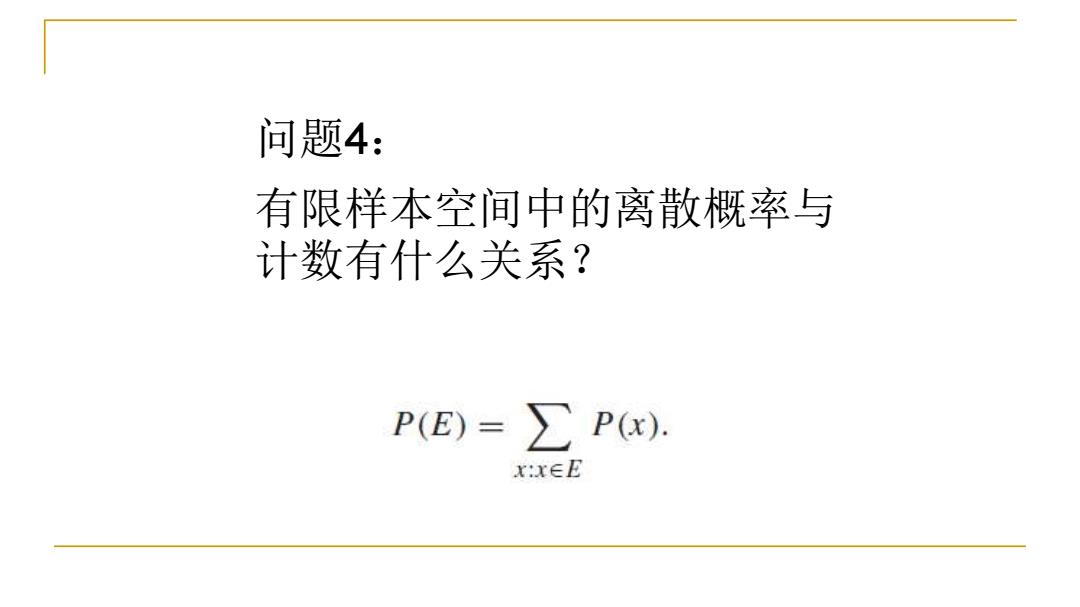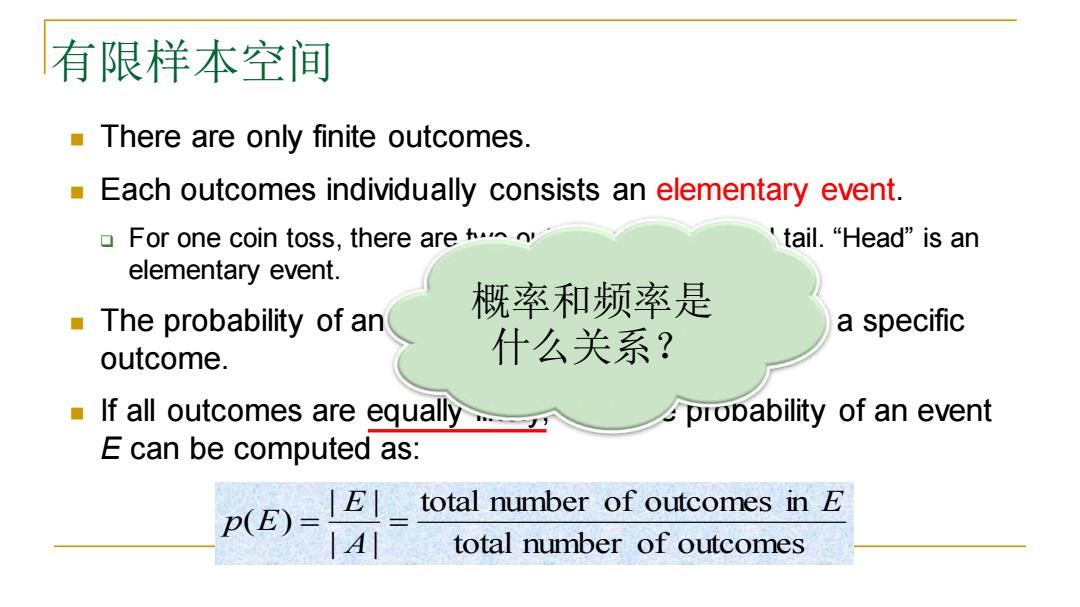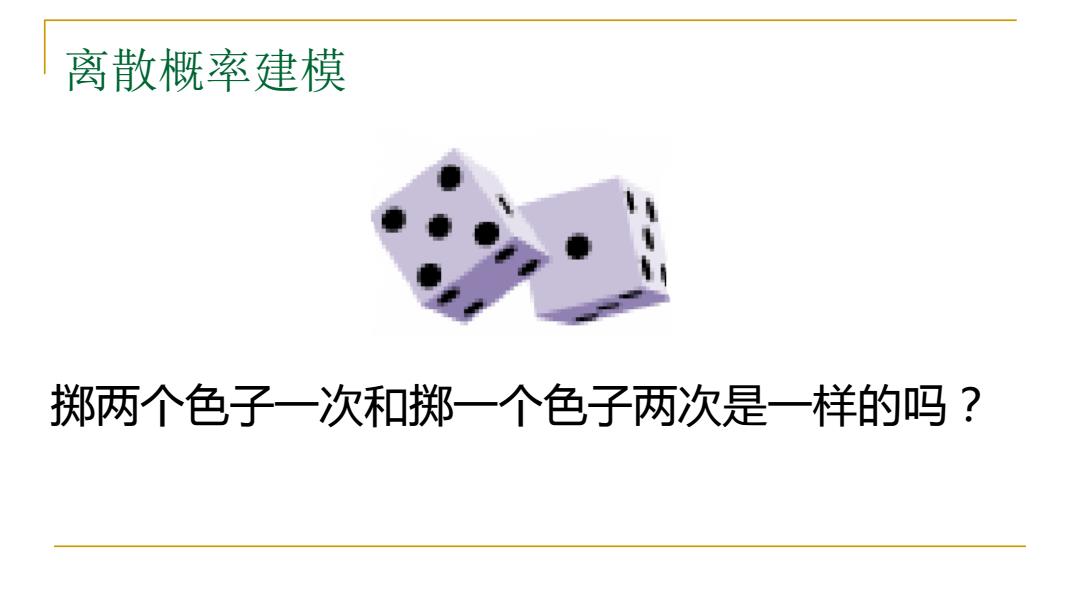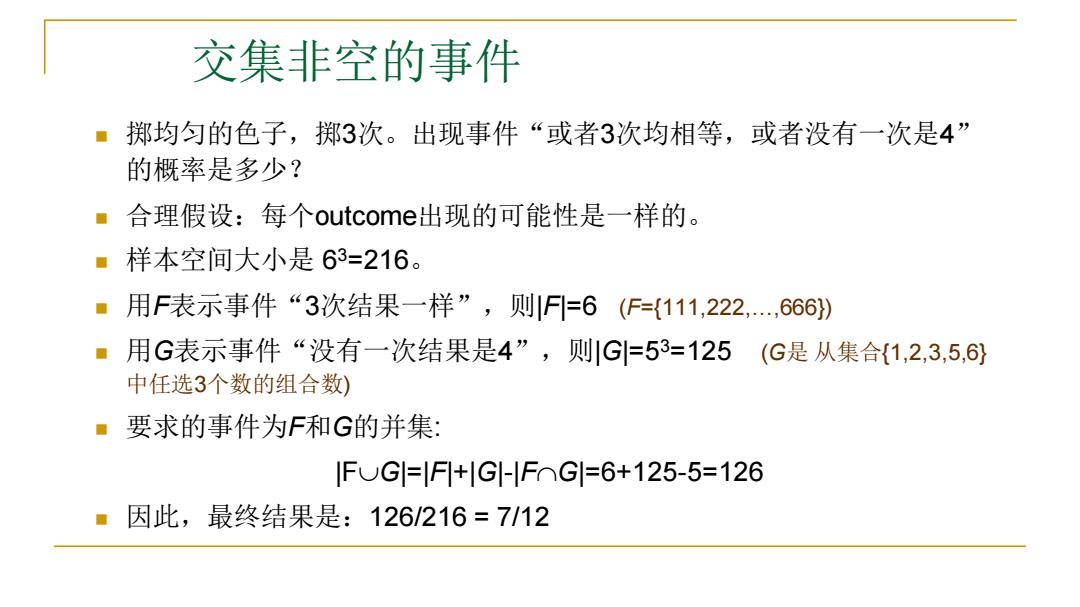
问题4: 有限样本空间中的离散概率与 计数有什么关系? P(E)=∑Px). x:x∈E
问题4: 有限样本空间中的离散概率与 计数有什么关系?

有限样本空间 There are only finite outcomes. Each outcomes individually consists an elementary event. For one coin toss,there are 'tail.“Head”isan elementary event. 概率和频率是 The probability of an a specific outcome. 什么关系? If all outcomes are equally propability of an event E can be computed as: p(E)= total number of outcomes in E total number of outcomes
有限样本空间 ◼ There are only finite outcomes. ◼ Each outcomes individually consists an elementary event. ❑ For one coin toss, there are two outcomes – head and tail. “Head” is an elementary event. ◼ The probability of an elementary event corresponds a specific outcome. ◼ If all outcomes are equally likely, then the probability of an event E can be computed as: total number of outcomes total number of outcomes in | | | | ( ) E A E p E = = 概率和频率是 什么关系?

离散概率建模 掷两个色子一次和掷一个色子两次是一样的吗?
离散概率建模 掷两个色子一次和掷一个色子两次是一样的吗?

Axioms for a probability space 满足下列性质的P称为一个probability distribution或者一个 probability measure. L.P(A)≥0 for any A C S. 2.P(S)=1 3.P(A U B)=P(A)+P(B)for any two disjoint events A and B. 记住:P是一个函数。 问题5: 为什台任何事件的概率值不会大于1? 如果A和B相交,P(AUB)是什么?
Axioms for a probability space 满足下列性质的P称为一个probability distribution 或者一个 probability measure。 记住:P 是一个函数

交集非空的事件 ■掷均匀的色子,掷3次。出现事件“或者3次均相等,或者没有一次是4” 的概率是多少? ■合理假设:每个outcome出现的可能性是一样的。 ■样本空间大小是63=216。 ·用F表示事件“3次结果一样”,则F=6(F={111,222,,666}》 ■用G表示事件“没有一次结果是4”,则1G=53=125(G是从集合{1,2,3,5,6} 中任选3个数的组合数) ■要求的事件为F和G的并集: IFUG=|F1+|G-lFnG=6+125-5=126 ■因此,最终结果是:126/216=7/12
交集非空的事件 ◼ 掷均匀的色子,掷3次。出现事件“或者3次均相等,或者没有一次是4” 的概率是多少? ◼ 合理假设:每个outcome出现的可能性是一样的。 ◼ 样本空间大小是 6 3=216。 ◼ 用F表示事件“3次结果一样”,则|F|=6 (F={111,222,…,666}) ◼ 用G表示事件“没有一次结果是4”,则|G|=53=125 (G是 从集合{1,2,3,5,6} 中任选3个数的组合数) ◼ 要求的事件为F和G的并集: |FG|=|F|+|G|-|FG|=6+125-5=126 ◼ 因此,最终结果是:126/216 = 7/12